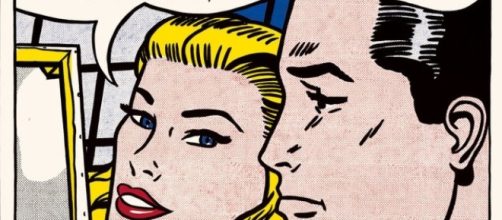Pop Art, that skin-deep ’60s movement long mocked by this column as empty-headed, has finally caught a break. The style, born out of boredom with the contemplation of their navel that Abstract Expressionists indulged in during the ‘50s, can now boast some meaning. Art collector Agnes Gund sold a prized painting by Roy Lichtenstein that hung over her living room mantel for the sole purpose of giving it all to charity.
Turning a bad thing good
Gund, a former president of the Museum of Modern Art in New York, sold Lichtenstein’s 1962 painting he titled “Masterpiece,” for $165 million – one of the 15 highest prices ever paid for art – in order to fund criminal justice reform and cut down the high incarceration rate.
Darren Walker, president of the Ford Foundation that will administer the fund, told the press. “Art has meaning on a wall, but it also has meaning when it is monetized.” I would argue that Lichtenstein’s painting, a cartoon copied from the Sunday comics, took only took on meaning when it came off the wall to fix a broken justice system.
An artist’s self-image made clear
How superficial is Lichtenstein’s Pop Art? He unwittingly provided an answer to that question when he famously called his picture-making “anti-contemplative.” What’s more, the painting that Gund sold clues us into what he thought with the words he inserted: “Why, Brad, darling, this painting is a masterpiece. My, soon you’ll have all of New York clamoring for your work.” It’s as if he were mocking the art world for admiring the hollowness of his work.
When imitation isn’t the most sincere form of flattery
Then there’s Lichtenstein’s mindlessness copying of other artists’ work. In fact, to ensure that he borrowed their images exactly, he traced reflections of them with what an opaque projector cast on his canvases. Making enlargements of borrowed imagery by mechanically reproducing them suggests that he was not only “anti-contemplative,” but also anti-creative. This is reminiscent of fellow Pop Artist Andy Warhol who freely acknowledged that his work was shallow. As he wrote in an exhibit catalog for his 1968 show in Stockholm, "If you want to know all about Andy Warhol, just look at the surface of my paintings... and there I am.
There’s nothing behind it."
A happy ending to a sad story
And given that Lichtenstein lifted other artists’ work, it’s a wonder he wasn’t brought up on charges for violating the copyright law, which clearly that you not only can’t copy, you can’t do anything even based on another’s work. His limitations make him an open and shut case for copyright infringement. All that said, his “Masterpiece” brought Gund a heap of cash and to her credit, she’s using it to try and fix the justice system. At least in this instance, monetizing art serves the greater good.


